The Cornell Lab Bird Academy › Discussion Groups › Bird Photography with Melissa Groo › Practice Understanding Birds for Better Photos
-

-
 Birders alert me that this Sword Billed hummingbird would feed from the flowers you see in white on the background so I was able to positioned my self to get a good angle to capture the image. I rely on locals for the best sightings most of the time and it usually has provided me great opportunities for some great images.
Birders alert me that this Sword Billed hummingbird would feed from the flowers you see in white on the background so I was able to positioned my self to get a good angle to capture the image. I rely on locals for the best sightings most of the time and it usually has provided me great opportunities for some great images. -
Rainbow bee-eaters (merops ornatus) are one of the most beautiful and elusive birds in my neighbourhood. I occasionally see them on a branch or wire, often in pairs, and always when I haven’t a camera with me. I learned that there were nesting pairs at a beach reserve near my home and I spent several hours over a few days sitting in the park. They nest in shallow burrows, sometimes in sand, but I couldn’t detect their comings and goings. By being very patient and letting them come to me I got some decent shots. Just yesterday, I was walking through the bush near a river and I saw a male bee-eater emerge from the bank in front of me. I knew instantly that I had finally found a burrow hollowed out of the sand of the river bank. After a quick look, I moved away, not wanting to disturb the birds.



-
I really enjoyed this assignment. I chose the tufted titmouse for my first field study bird because they're frequent visitors to the feeders in back of my house. Although I see them often, I'd never really taken time to learn about their behavior. Reading more about their feeding habits and preferred habitat helped me better predict when and where I would see them. One fun fact I learned about titmice is that they will often take the largest seed/nut they can find to a nearby branch and either eat it or stow it to eat later. I just missed a shot of one with a very large peanut in its mouth, and I took lots of bad, blurry pictures before I managed to get these two shots (Nikon 300mm w/ 1.4x teleconverter).


-

 This female Baltimore Oriole was using my garden string as material to feather her nest. She was a little acrobat hanging upside down. The nest was a sock like hanging nest in a Silver Maple tree in our front yard. (We are on a very open farm with no close neighbors with woods in various locations)
This female Baltimore Oriole was using my garden string as material to feather her nest. She was a little acrobat hanging upside down. The nest was a sock like hanging nest in a Silver Maple tree in our front yard. (We are on a very open farm with no close neighbors with woods in various locations) -
Gosh it's annoying when pages time out when you submit a post :| I was going to study some fabulous bird like the roseate spoonbill, or pick a species of hummingbird. However, I realised I know little about the swallows that whizz around our apartment building all day terminating mosquitos and, I assumed, nesting in the half-finished construction site next door. It turns they're blue and white swallows which are the most common swallow here and have an enormous range of most of South America (PT: Andorinha-pequena-de-casa (small house swallow)). The are common in open grassy areas in the wild, but have adapted well to urbanisation, nesting colonially in building openings and bridges. I found a study from Minas Gerais where the researchers found only 20% of nests to be successful due to predation and unviable eggs. The authors noted that despite how abundant the species is in urbanised Brazil, little is known about their habits and the effects of urbanisation on breeding. For some reason (unexplained) breeding tends to start at the onset of the rainy season. This exercise was useful because it forced me to finally make a positive ID on a species I enjoy observing every day. They're really hard to photograph as they're so quick and acrobatic in the air but they do tend to land on a large tree nearby and on the construction site and chatter to each other when it's raining heavily. Soggy andorinhas attached.


-
 This is a lovely Snowy Egret who lives in the Duck Pond at my school. It's very used to humans, although people prefer to pay attention to the Mallards. I really enjoyed sitting and watching this guy. It makes an interesting splash with its bill that somehow draws tiny fish to it. It's a great bird to study the behavior of as it carries on with its Egret life right under the noses of people on campus. If you give it time and space like I did here, it doesn't mind coming close to you and giving you intimate looks into its behavior.
This is a lovely Snowy Egret who lives in the Duck Pond at my school. It's very used to humans, although people prefer to pay attention to the Mallards. I really enjoyed sitting and watching this guy. It makes an interesting splash with its bill that somehow draws tiny fish to it. It's a great bird to study the behavior of as it carries on with its Egret life right under the noses of people on campus. If you give it time and space like I did here, it doesn't mind coming close to you and giving you intimate looks into its behavior. -
I have spent nearly four years under an osprey nest on the coast of Maine near Freeport. I start when they arrive often in late March and spend about 6 hours a week taking images. I record everything from the reconstruction of the nest, courting and mating, the development of the chicks and fledglings and finally their departure in late September. The timing of the eggs and birth of the chicks is difficult to know especially when I can only photograph through a dense forest canopy well below the nest which is about 60 feet above where I stand. The critical time is when the fledglings begin to try their wings which is about five weeks after they are born. They grow quickly in Maine because of the rich fishing waters and the general lack of predators. My interest has been trying to estimate their first flights, then their first successful fishing, and finally their departure. Research to date provide insight into how and when their feathers develop. Early on and through most of their time they are mottled. Although it is difficult to determine the sex of the birds, the young female fledglings begin to show the development of the "osprey necklace" near the time of their leaving. In the image below it is difficult to see that but the osprey on the left appears to be the female. The image was taken on July 22nd 2021 and by the time I took the last image of her, the feather remained mottled but the necklace was starting to take full shape. Her mother who I have followed for two years has a pronounced necklace in size and color. My last image of this bird on September 30th 2021 showed that; as well she was almost as large as the mother. Comparison of images suggests that she inherited the strong necklace. Mature females I discover begin their migration earlier than the males and the year's younger adults. Although much has been written about ospreys in the past few years, there are substantial gaps regarding the maturation of the young. Some state that the male helps the young fish or look for fish, yet I have seen immature ospreys such as the one on the left successfully bring fish back to eat. Unlike when the adults feed the young, immature ospreys search out places in trees to consume the fish. Also, I have observed that while the adults bring headless fish back to the nests, the young bring entire fish back to their roosts. In both cases, the head is eaten first. I am certainly far from being an ornithologist although I have a scientific back ground, much of what I have written comes from extensive observation of a pair of ospreys occupying a nest over four years. The male appears to be the same but there has been two females. While I consult widely, my research is my own based on field observation. I would like to be able to compare my observations with those of others but that is difficult.
-

-
Admittedly this is not greatest picture, but its on of my favorites. This is a Northern Goshawk (NOGO) sitting on her nest. Goshawks are, in my humble opinion, one of North America's most beautiful raptors. They are fiercely territorial and will dive bomb any intruder that gets too close to their nest while screaming out their unique alarm call. They are the perfect combination of beauty and power. My summer job (for the past 31 years) is as a wildlife technician for the U.S. Forest Service. Part of my job is to find and monitor NOGO nests. It isn't easy to find a NOGO let alone their nest. After researching this bird and from experience I know that I need to look in mature to over mature forests, on north or east facing slopes near running water and usually below 7,ooo ft elevation. I have to visit each nest 2 or 3 times during the nesting season to track the progress and success of the nest. I try not to disturb the birds when I do this, but I have been put on the ground many times by an angry adult over the years. It's a bit unnerving for both the bird and me. That's one of the reasons I like this photo. It shows the bird on the cryptically constructed nest, watching me intently, waiting to see if I'll approach too close. I've learned to respect that look. I can get all the info I need for this visit; the nest is active with an incubating or brooding adult. While I would love to get a closer picture, approaching closer would most likely initiate her defense behaviors, causing her a lot of stress (this nest was close to a logging road so she already had enough stress in her life). So I left. Unfortunately, when I returned for a follow up visit I found the nest abandoned and it hasn't been used since.

-
I chose the American Eagle. I live on Amos Lake in Preston CT and these magnificent birds of prey are regulars here. The habitat is ideal as the lake is a trophy fishing lake not only for the anglers but for the eagles as well. Breeding season here in Connecticut is January/February. I have only lived here for one year but have been fortunate to see the eagles interact in courting as well as fighting over food. I love to watch them circle around and come down to the lake and snatch a fish with their talons. Very often their loud voices will alert us to their presence. When they fight over food their screeching becomes extremely loud. Many eagles winter over in Connecticut. Mostly the eagles will stay as long as their food source is available. I have also been fortunate to be able to photograph the eagles from my lake front deck without them ever knowing.
-



-
Each day we watch the Common Ravens and Great Horned Owls that live and breed near our home in Southern California, but we’d never never seen them interact with each other until I saw the pair of ravens chase this owl into a Sycamore tree in our backyard. The owl and one of the ravens watched the other raven object to the owl’s presence by loudly vocalizing and gesturing, to no avail. The ravens ultimately lost interest, leaving the owl to perch, preen, and sleep in this spot for the next three hours.



-
Yippee! The warblers are coming back tomThe Bahamas
 for the winter, some still showing breeding plumage. The figs in a neighboring tree are just right for a quick meal before nighttime. I loved how this little Cape May Warbler literally sat on a leaf while eating. Usually they are so flighty that a good picture is a challenge. Nikon P1000.
for the winter, some still showing breeding plumage. The figs in a neighboring tree are just right for a quick meal before nighttime. I loved how this little Cape May Warbler literally sat on a leaf while eating. Usually they are so flighty that a good picture is a challenge. Nikon P1000. -
I frequently walk in an area with lots of oak and mixed oak/fir habitat, so I chose Acorn Woodpeckers as my study species. Learning about their communal groups and the storing of acorns in granary trees, I listened for the sounds of tapping, located a granary tree and settled in to observe. Several woodpeckers were actively collecting and storing acorns. They were initially alarmed when they noticed me, signaling others to my presence. I maintained adequate distance and they gradually returned to their work of storing acorns and I was able to get some nice photos with my NikonP1000.



-
Such a beautiful bird! I really like the photo with the blue sky and and green leaves. The colors seem to frame the bird nicely. I have seen several woodpeckers in my area but I have never seen an Acorn Woodpecker. I really like their red, bushy top.
-
-
After completing this lesson, I took the challenge and left my backyard birding to venture into a nearby park. I used Ebird and discovered the Belted KingFisher. It looks like a beautiful bird and there have been many recent sightings at my nearby park. I set off this sunny afternoon after several days of rainy weather. I was super excited for my adventure and really hoping to see the Belted Kingfisher. Well, after 2 hours of waiting and watching and wandering, I did not find him. However, 5 minutes into my journey at the park, I looked up into the trees and directly overhead was a BEAUTIFUL Red Shouldered Hawk just sitting and observing the happenings of the trail. I was so excited to see this magnificent creature that I have only seen 3 times in the past decade in my backyard. I am so happy to have completed lesson 1 with the knowledge and confidence to explore outside of my backyard. I can't wait for future lessons and future bird sightings. I am looking forward to learning how to use my camera to it's full ability. I recently purchased a Nikon D 780. I used my 200-500 mm f/5.6 for this shot. And I will , one day, see the Belted KingFisher. And I can't wait!!!

-
I've had a small grey bird I've not recognised before in my garden. I was alerted to its presence by its call, a high pitched cheep, cheep cheep. I did my research and after a further couple of very brief sightings I've identified it as a grey fantail. I'm in Melbourne, SE Australia. I've learnt that they're returning now in the southern spring. The next challenge is to get a respectable photograph. Its a small bird that flits in and out of the bushes. It wont keep still! Hopefully I'll be back with an image.
-
Labor Day weekend, two days after I finished lesson 1 I am on my way out to the patio to put the grill away and l can hear a bird making a very loud distress or alarm call. Once outside I realize it is in the Arborvitaes and I think to myself, "I will never find it", but I did! I couldn't identify the bird because of low light and the height but remembered my camera was just inside the back door. Again, I thought, " It will be gone by the time I get back to this spot", but what the heck, the grill can wait. As I came back no more bird calls but I see something white up there and get off a few shots. I looked down to check out the photos, look up and the bird is gone! This is my bird! I'm doing everything backwards. I download the photo on my computer and did the Merlin ID off the screen. Seeing the result my reaction is, "This does not seem right". The next day I spent researching House and Carolina Wrens and even checked out Winter, Sedge and Marsh Wrens, the ones I can see in Ohio. I knew more about the House Wren, they nested in a bird house hanging from our pergola. While Wrens have many similarities there are differences and I see a Carolina Wren in these photos. I don't know what happened to my paragraphs, not enough space?


-
I chose the Great Blue Heron to research and photograph. Great Blue Herons are fairly common around the canals and ponds here so I set out to some ponds near my house to photograph them. I did find it interesting that on this particular day all my heron sightings were by the canals leading to the ponds and not the actual ponds themselves. Other than that my sightings did not surprise me, and my research was spot on with what I would find.

-
During the late summer of 2019, I purchased a hummingbird feeder and filled it as the directions indicated. I was able to observe the little avians for several weeks before it became evident that they had stopped coming to the feeder. In the year 2020, I saw no hummingbirds and I was ready to abandon even trying to attract them in 2021. However, an acquaintance who was a more experienced birder told me to hang the feeder in early June and just wait. Whlie I was waiting, I did some research and learned the migration cycle for the hummingbirds. My research helped me have more patience and I was rewarded with several visitors to the feeder. In fact, they seem to have taken a liking to my backyard and have become regulars. The activity captured here appears to be a female stretching her wings during a preening session after feeding.
 The photo shared here was taken using this very amatuer set-up. And you can read more about it here:
https://www.kenlon.com/ed/wp/?p=1957
The photo shared here was taken using this very amatuer set-up. And you can read more about it here:
https://www.kenlon.com/ed/wp/?p=1957
-
Read about Crested Serpent eagle, their nesting sites. Feeding habits. Trying to learn more about them.
-
I took this photo a few days ago of a wood duck preening her little ones. She was so sweet with them, and they were also preening each other too, learning from her I guess. They seem to do really well in the large park near me (over 500 acres)- Prospect Park in Brooklyn, New York. I often see them on the smaller pools that have protected, wooded vegetation alongside as well as nest boxes which I don't know if they use- I've heard from other birders that they don't but they do like the area where they are placed and sometimes I see them in that general area. I used my Canon Powershot so the quality isn't very good, but I love the convenience of having it in my pocket. I'm trying to decide if I want to upgrade. I know my photos would improve, but I'm not sure I want to carry a large camera around with me. I'm also a little afraid of the learning curve. I'm an avid birder and use my sightings and photos to inspire my art: hand colored block prints usually featuring birds.

-
 I thought I would start with Red-Winged Blackbirds. As a beginner, it was nice to photograph a bird that isn't shy, and displays impressively in the spring when establishing or on territory. The males arrive first, and stake out their spots. This particular habitat, in the Minnesota River Valley National Wildlife Refuge, hosts dozens of nesting pairs, and is less than a mile from the Mall of America!
I thought I would start with Red-Winged Blackbirds. As a beginner, it was nice to photograph a bird that isn't shy, and displays impressively in the spring when establishing or on territory. The males arrive first, and stake out their spots. This particular habitat, in the Minnesota River Valley National Wildlife Refuge, hosts dozens of nesting pairs, and is less than a mile from the Mall of America! -
 Browsing through my Birds of Seattle book, I decided to go with the Pileated Woodpecker, as my experience with it really matched our lesson. I was walking through the woods at Golden Gardens park and noticed a downed tree that had been practically hollowed out with oval holes. I wondered what had done the digging. I wondered about beavers. In reading up on this large woodpecker, I learned that such holes are the often the only evidence of the bird in the area.
A while later, I heard a distinctive tap-tap-tap of a woodpecker pecking away. But I couldn't see it from where I was. Fortunately, I was able to circle around the small pond I was standing by and from the opposite side was able to see and photograph this amazing bird. If you'd like to hear and see it in action, you can watch this short video that I captured here.
Browsing through my Birds of Seattle book, I decided to go with the Pileated Woodpecker, as my experience with it really matched our lesson. I was walking through the woods at Golden Gardens park and noticed a downed tree that had been practically hollowed out with oval holes. I wondered what had done the digging. I wondered about beavers. In reading up on this large woodpecker, I learned that such holes are the often the only evidence of the bird in the area.
A while later, I heard a distinctive tap-tap-tap of a woodpecker pecking away. But I couldn't see it from where I was. Fortunately, I was able to circle around the small pond I was standing by and from the opposite side was able to see and photograph this amazing bird. If you'd like to hear and see it in action, you can watch this short video that I captured here. -
What a great video you got! This is one of my favorite birds. I first saw one 30 years ago and saw very few ever again, until recently. They seem to be more common in my area now and I have even seen one in my own yard! I'd really like to get some good pictures of one someday.
-
-

 I went to a local park along the Bow River in Calgary hoping to observe and watch some of the birds local to the area at this time of year. I did not expect to see these two American White Pelicans so that was an unexpected surprise. They both stood on this rocky outcrop for some time before one ventured out into the water.
I went to a local park along the Bow River in Calgary hoping to observe and watch some of the birds local to the area at this time of year. I did not expect to see these two American White Pelicans so that was an unexpected surprise. They both stood on this rocky outcrop for some time before one ventured out into the water.
Read More:
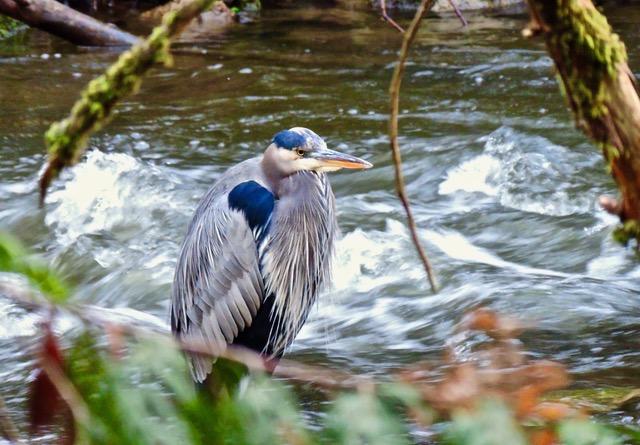
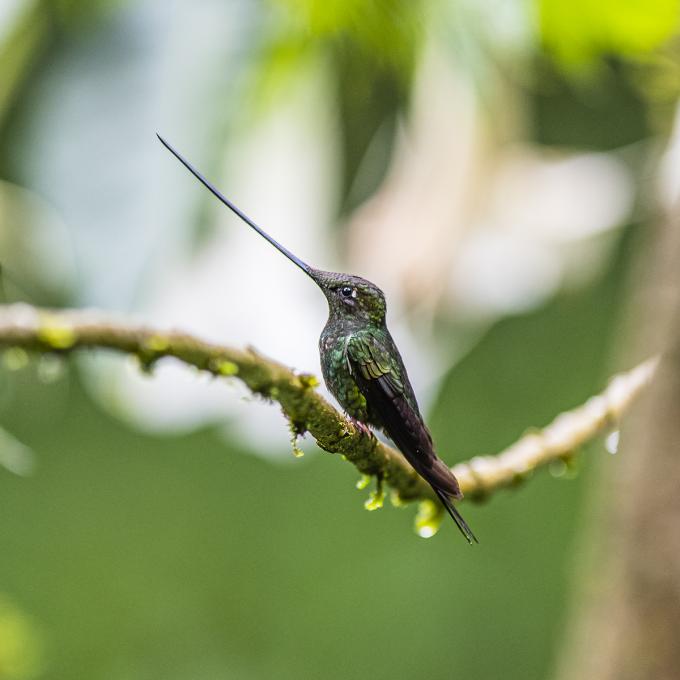 Birders alert me that this Sword Billed hummingbird would feed from the flowers you see in white on the background so I was able to positioned my self to get a good angle to capture the image. I rely on locals for the best sightings most of the time and it usually has provided me great opportunities for some great images.
Birders alert me that this Sword Billed hummingbird would feed from the flowers you see in white on the background so I was able to positioned my self to get a good angle to capture the image. I rely on locals for the best sightings most of the time and it usually has provided me great opportunities for some great images. 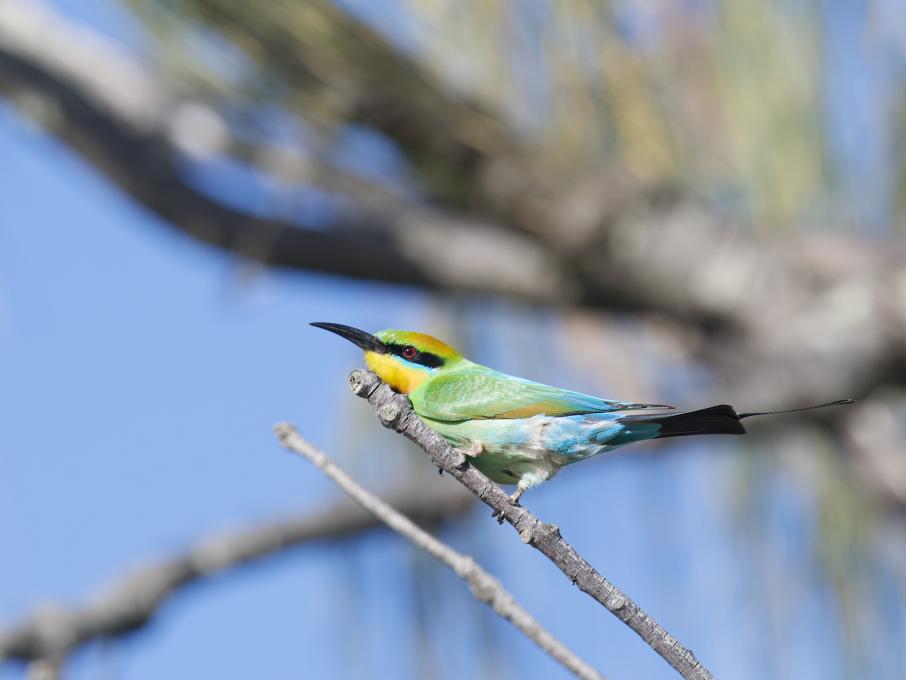

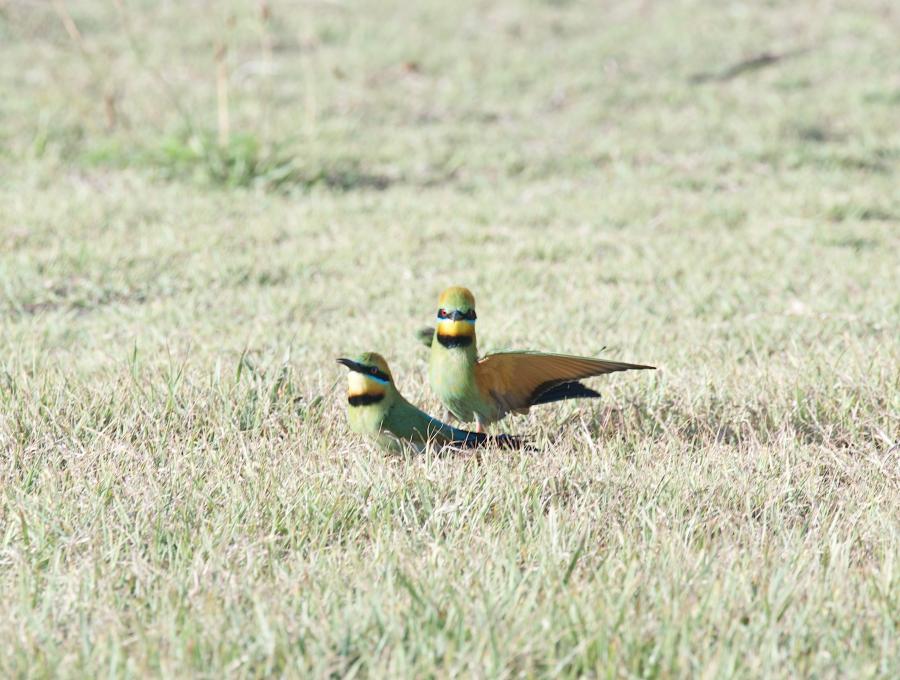
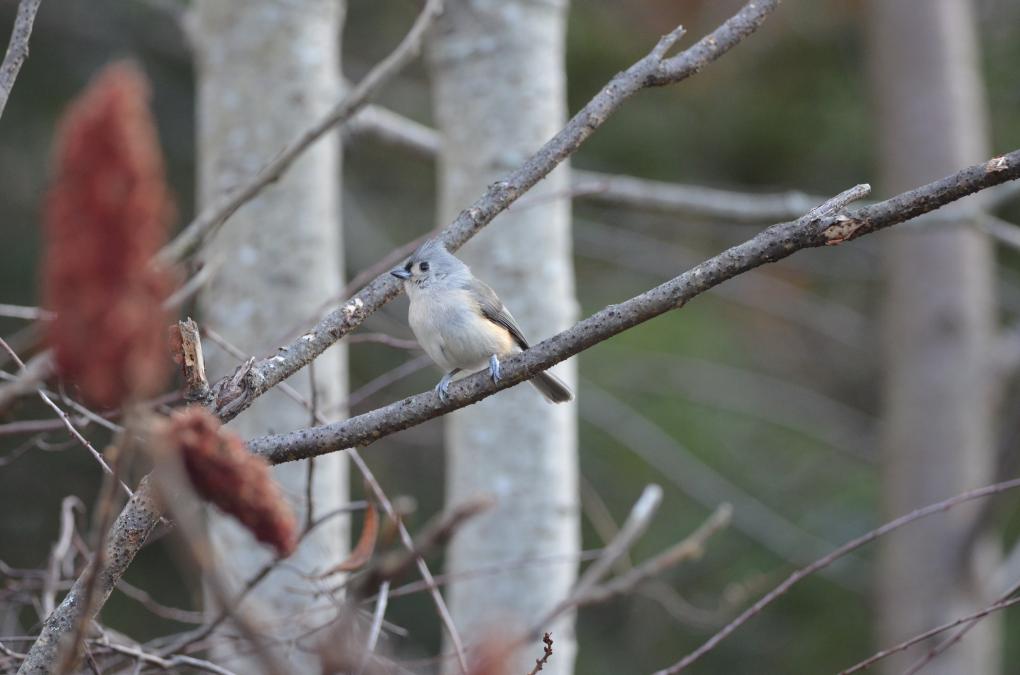
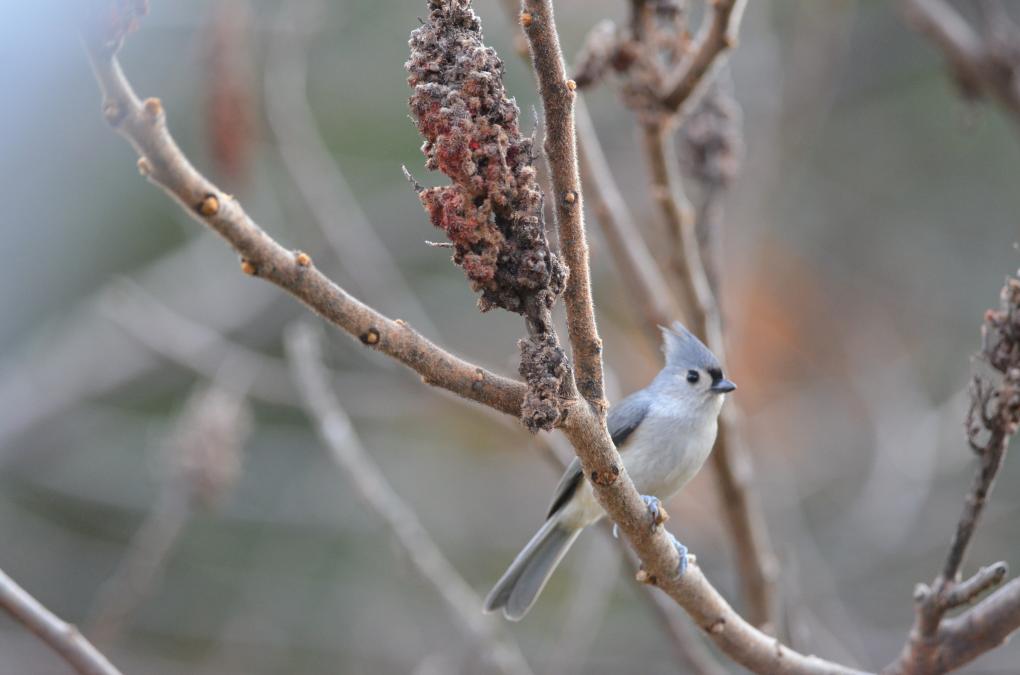
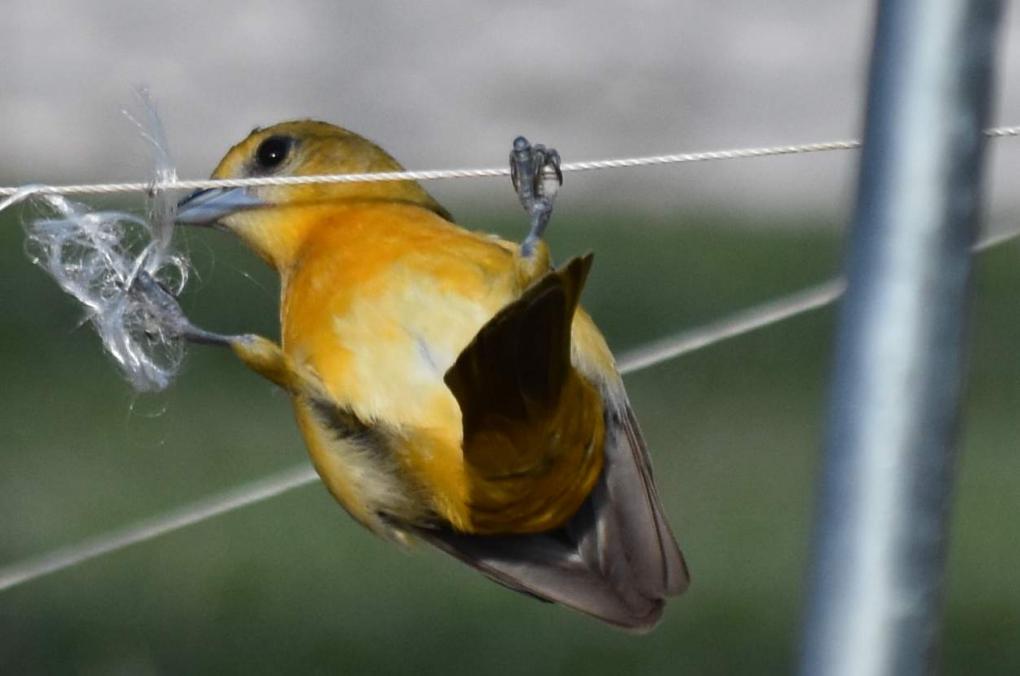
 This female Baltimore Oriole was using my garden string as material to feather her nest. She was a little acrobat hanging upside down. The nest was a sock like hanging nest in a Silver Maple tree in our front yard. (We are on a very open farm with no close neighbors with woods in various locations)
This female Baltimore Oriole was using my garden string as material to feather her nest. She was a little acrobat hanging upside down. The nest was a sock like hanging nest in a Silver Maple tree in our front yard. (We are on a very open farm with no close neighbors with woods in various locations) 
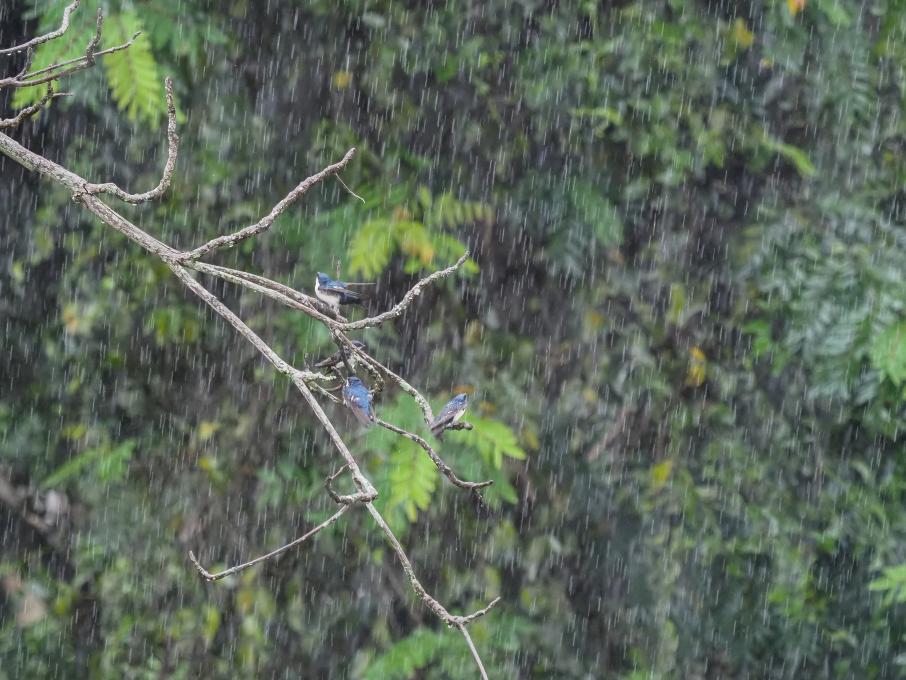
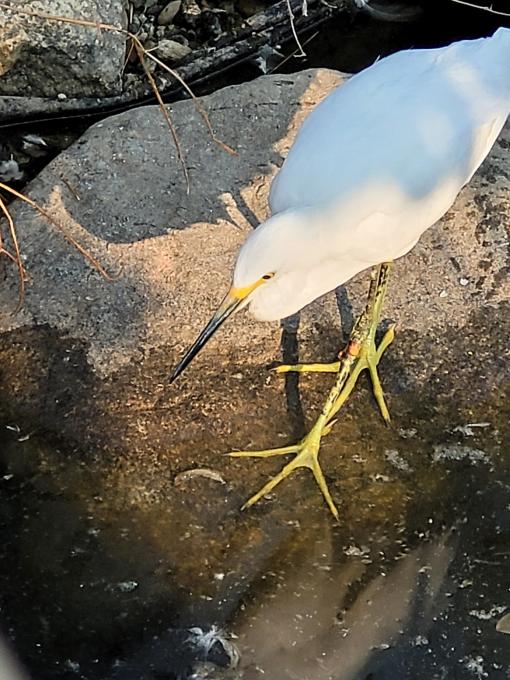 This is a lovely Snowy Egret who lives in the Duck Pond at my school. It's very used to humans, although people prefer to pay attention to the Mallards. I really enjoyed sitting and watching this guy. It makes an interesting splash with its bill that somehow draws tiny fish to it. It's a great bird to study the behavior of as it carries on with its Egret life right under the noses of people on campus. If you give it time and space like I did here, it doesn't mind coming close to you and giving you intimate looks into its behavior.
This is a lovely Snowy Egret who lives in the Duck Pond at my school. It's very used to humans, although people prefer to pay attention to the Mallards. I really enjoyed sitting and watching this guy. It makes an interesting splash with its bill that somehow draws tiny fish to it. It's a great bird to study the behavior of as it carries on with its Egret life right under the noses of people on campus. If you give it time and space like I did here, it doesn't mind coming close to you and giving you intimate looks into its behavior. 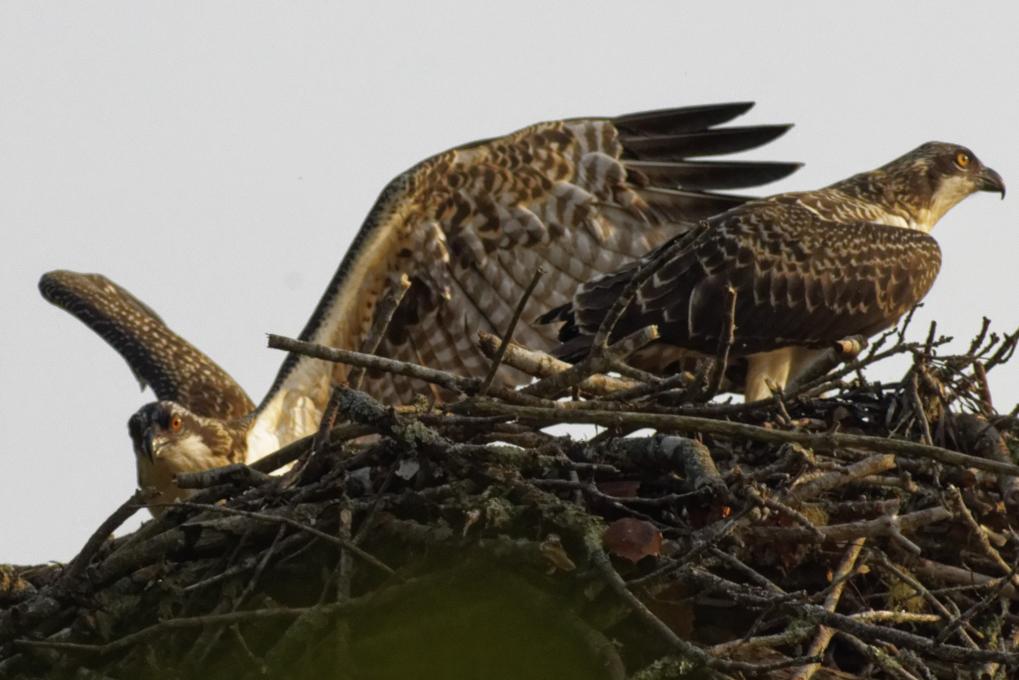


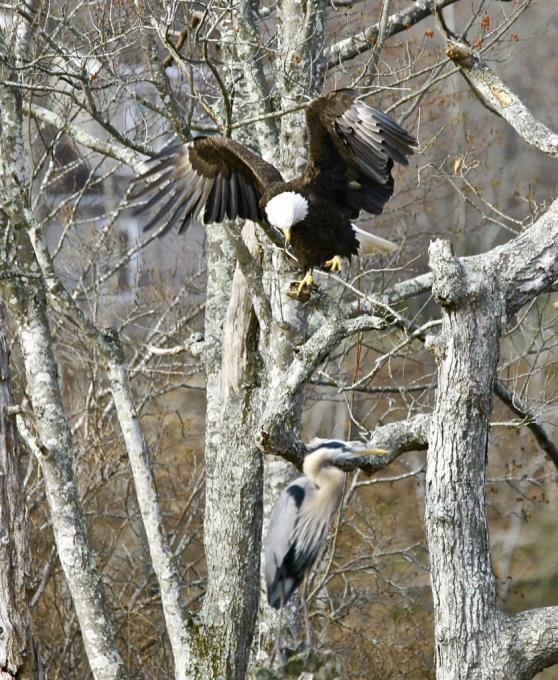
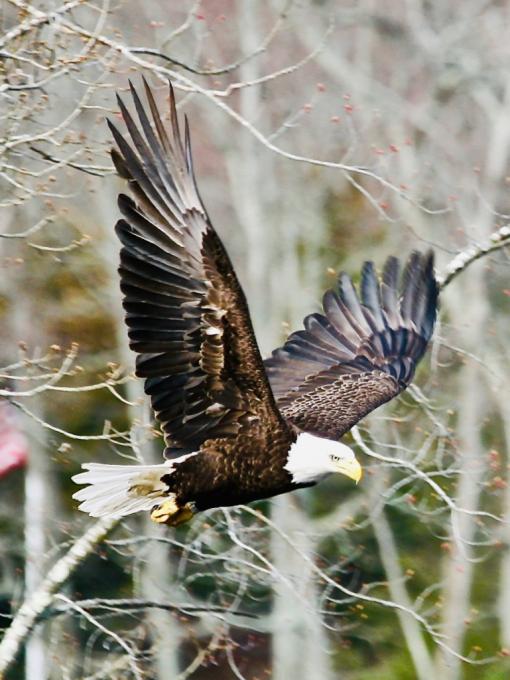
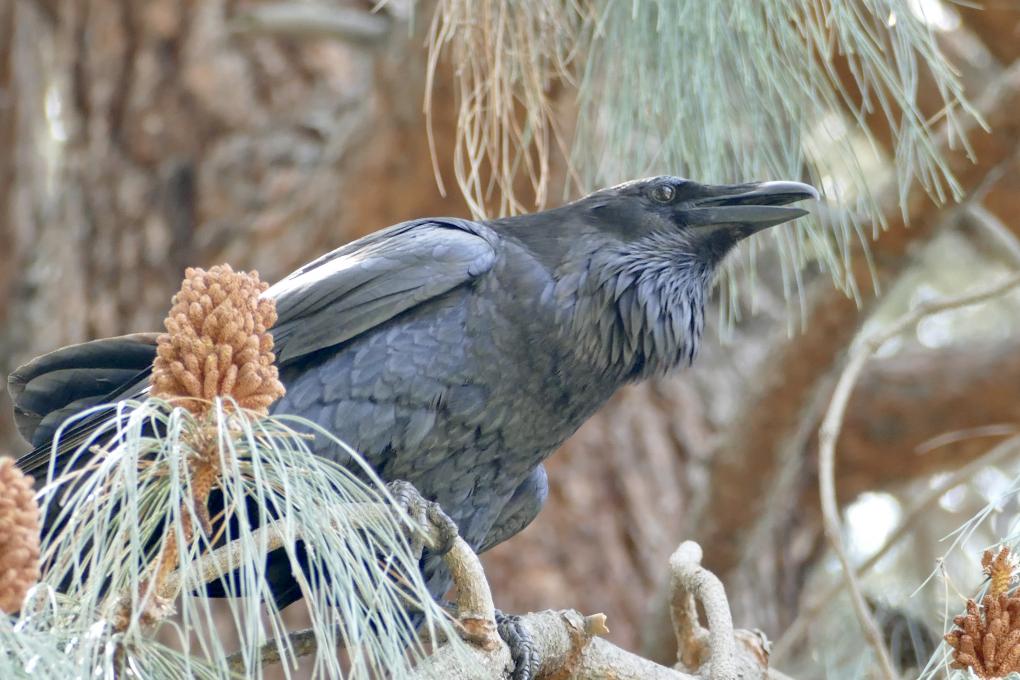
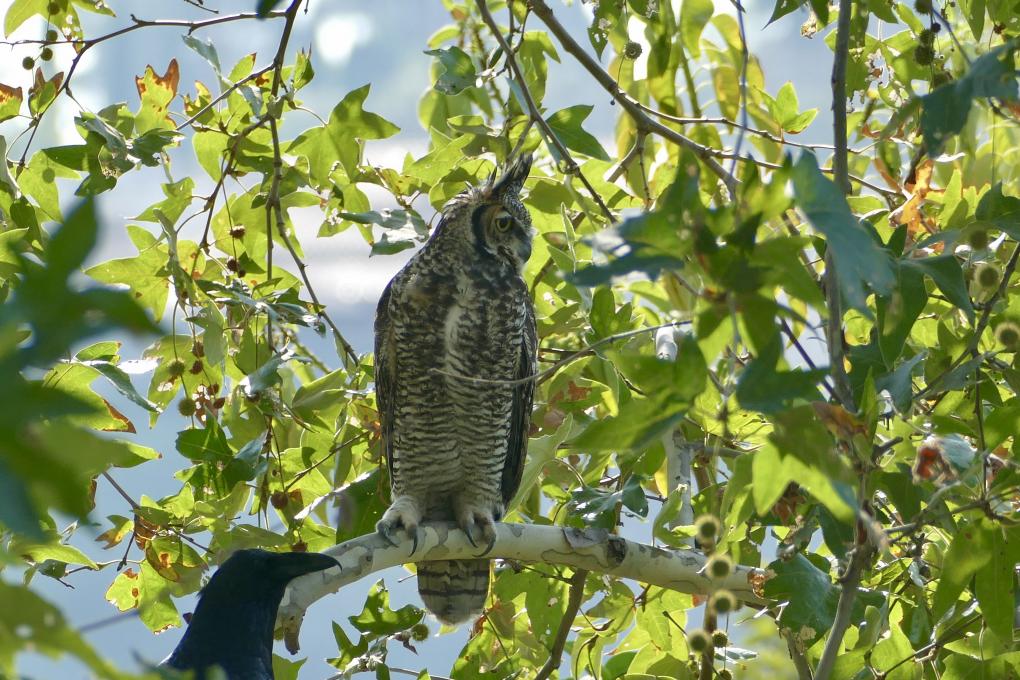
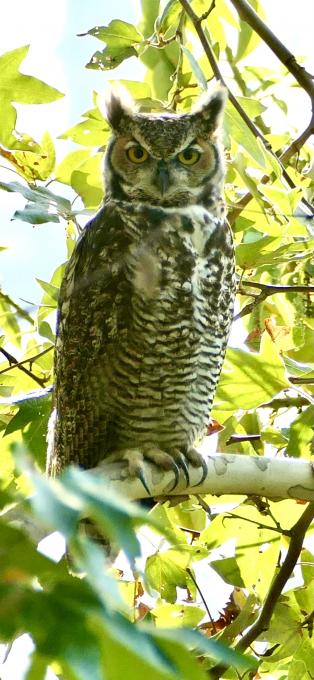
 for the winter, some still showing breeding plumage. The figs in a neighboring tree are just right for a quick meal before nighttime. I loved how this little Cape May Warbler literally sat on a leaf while eating. Usually they are so flighty that a good picture is a challenge. Nikon P1000.
for the winter, some still showing breeding plumage. The figs in a neighboring tree are just right for a quick meal before nighttime. I loved how this little Cape May Warbler literally sat on a leaf while eating. Usually they are so flighty that a good picture is a challenge. Nikon P1000. 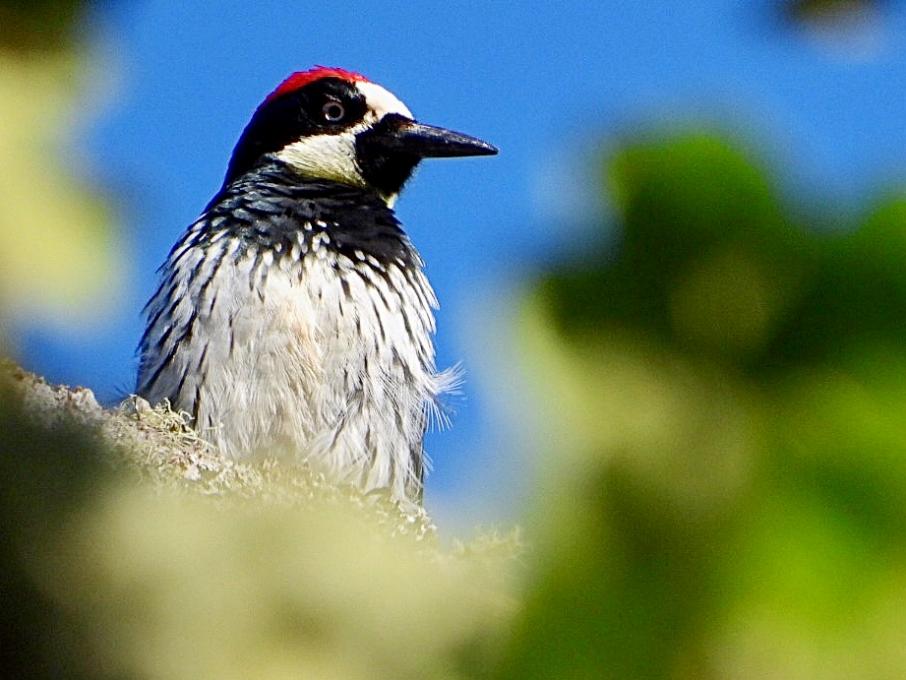





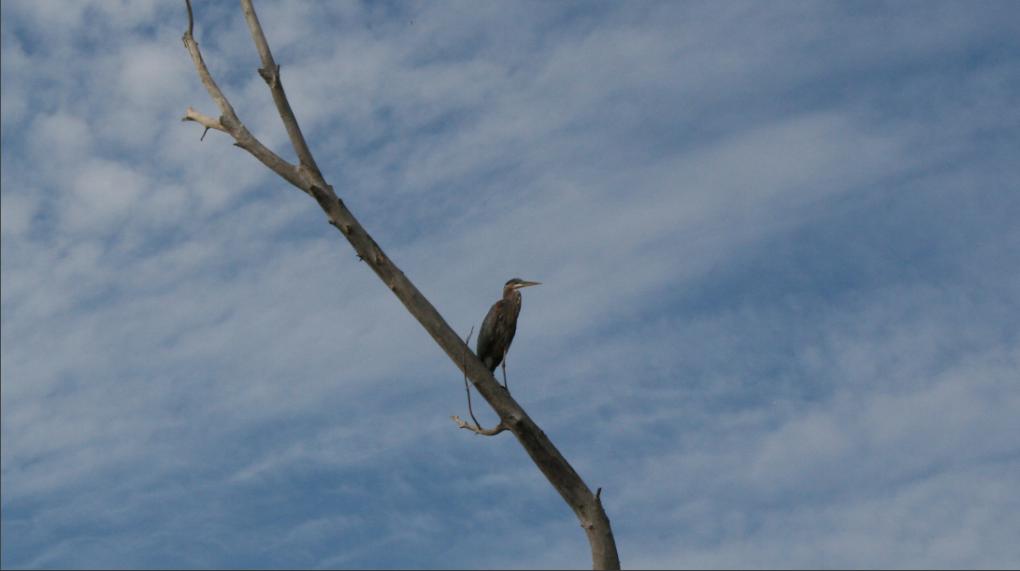
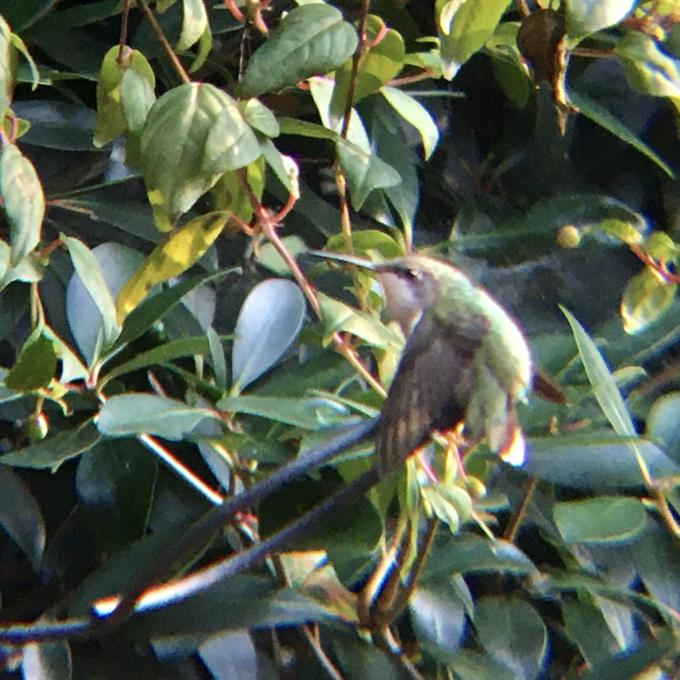 The photo shared here was taken using this very amatuer set-up. And you can read more about it here:
https://www.kenlon.com/ed/wp/?p=1957
The photo shared here was taken using this very amatuer set-up. And you can read more about it here:
https://www.kenlon.com/ed/wp/?p=1957
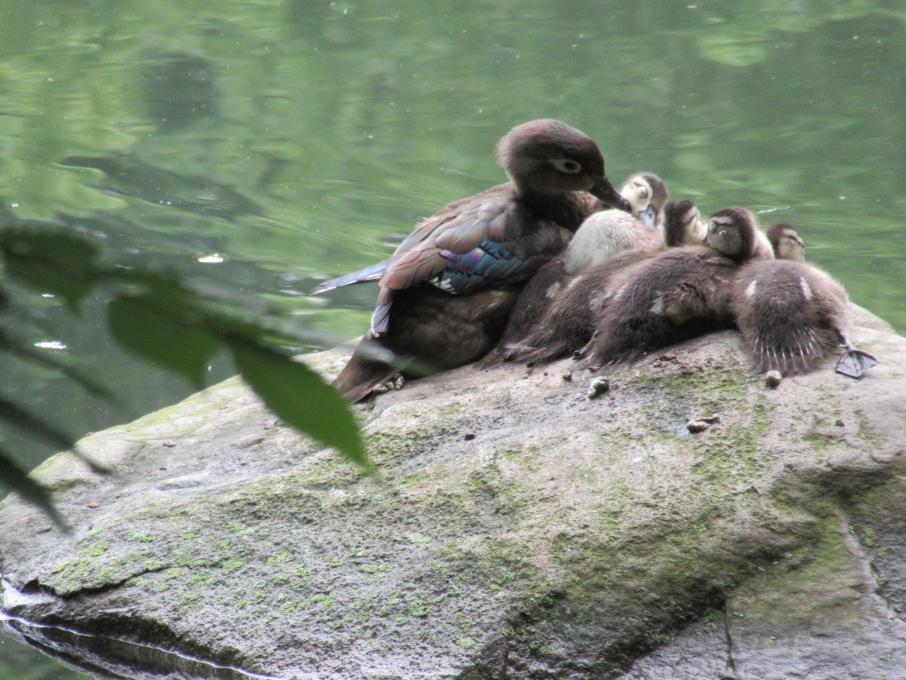
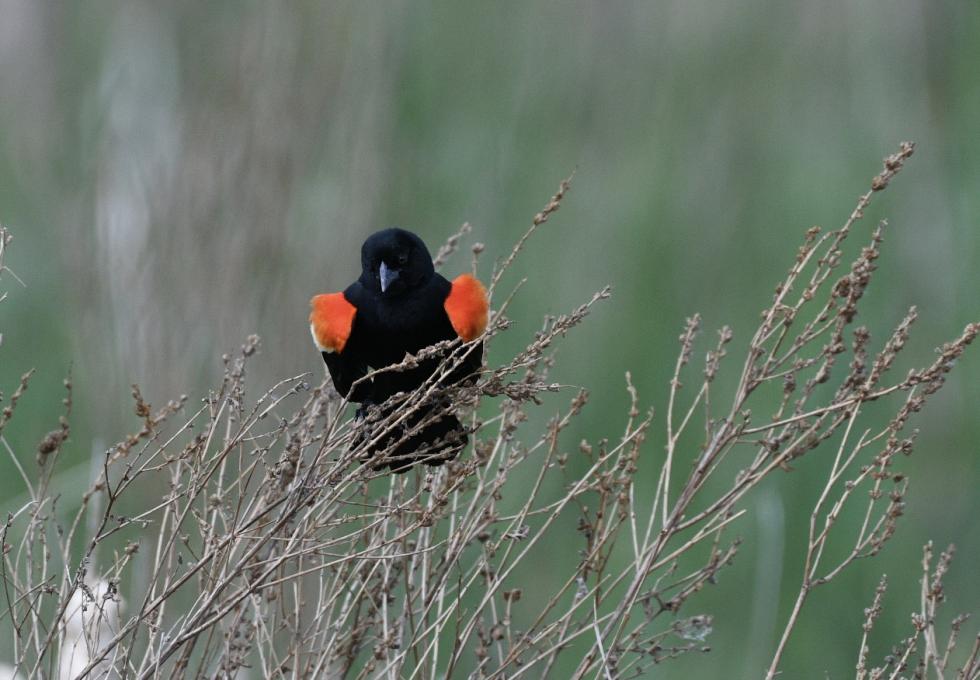 I thought I would start with Red-Winged Blackbirds. As a beginner, it was nice to photograph a bird that isn't shy, and displays impressively in the spring when establishing or on territory. The males arrive first, and stake out their spots. This particular habitat, in the Minnesota River Valley National Wildlife Refuge, hosts dozens of nesting pairs, and is less than a mile from the Mall of America!
I thought I would start with Red-Winged Blackbirds. As a beginner, it was nice to photograph a bird that isn't shy, and displays impressively in the spring when establishing or on territory. The males arrive first, and stake out their spots. This particular habitat, in the Minnesota River Valley National Wildlife Refuge, hosts dozens of nesting pairs, and is less than a mile from the Mall of America!  Browsing through my Birds of Seattle book, I decided to go with the Pileated Woodpecker, as my experience with it really matched our lesson. I was walking through the woods at Golden Gardens park and noticed a downed tree that had been practically hollowed out with oval holes. I wondered what had done the digging. I wondered about beavers. In reading up on this large woodpecker, I learned that such holes are the often the only evidence of the bird in the area.
A while later, I heard a distinctive tap-tap-tap of a woodpecker pecking away. But I couldn't see it from where I was. Fortunately, I was able to circle around the small pond I was standing by and from the opposite side was able to see and photograph this amazing bird. If you'd like to hear and see it in action, you can watch
Browsing through my Birds of Seattle book, I decided to go with the Pileated Woodpecker, as my experience with it really matched our lesson. I was walking through the woods at Golden Gardens park and noticed a downed tree that had been practically hollowed out with oval holes. I wondered what had done the digging. I wondered about beavers. In reading up on this large woodpecker, I learned that such holes are the often the only evidence of the bird in the area.
A while later, I heard a distinctive tap-tap-tap of a woodpecker pecking away. But I couldn't see it from where I was. Fortunately, I was able to circle around the small pond I was standing by and from the opposite side was able to see and photograph this amazing bird. If you'd like to hear and see it in action, you can watch 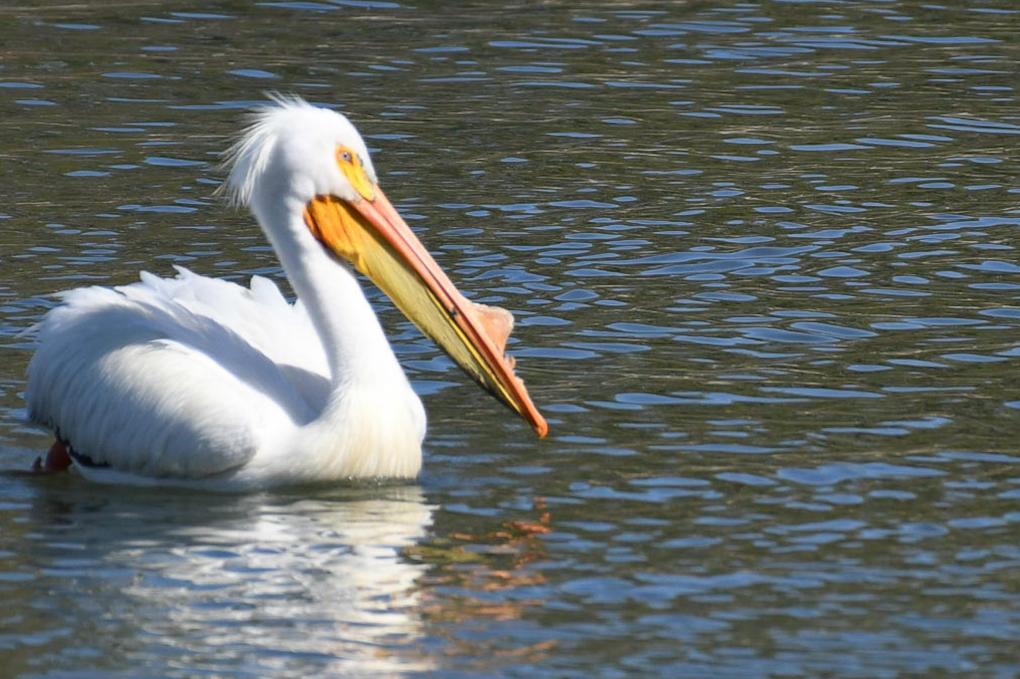
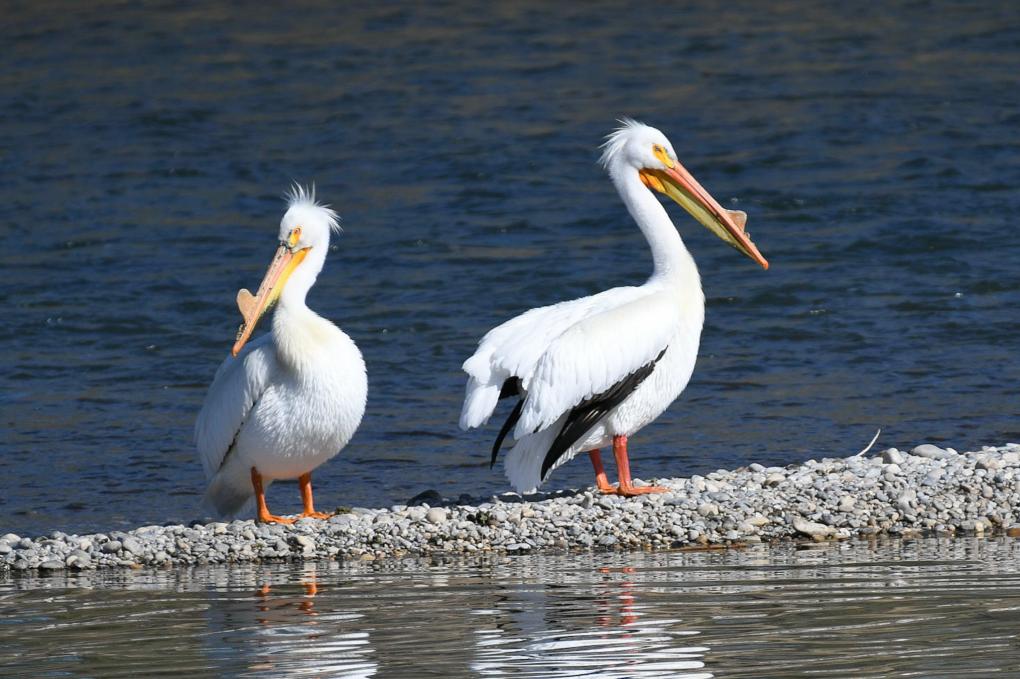 I went to a local park along the Bow River in Calgary hoping to observe and watch some of the birds local to the area at this time of year. I did not expect to see these two American White Pelicans so that was an unexpected surprise. They both stood on this rocky outcrop for some time before one ventured out into the water.
I went to a local park along the Bow River in Calgary hoping to observe and watch some of the birds local to the area at this time of year. I did not expect to see these two American White Pelicans so that was an unexpected surprise. They both stood on this rocky outcrop for some time before one ventured out into the water.